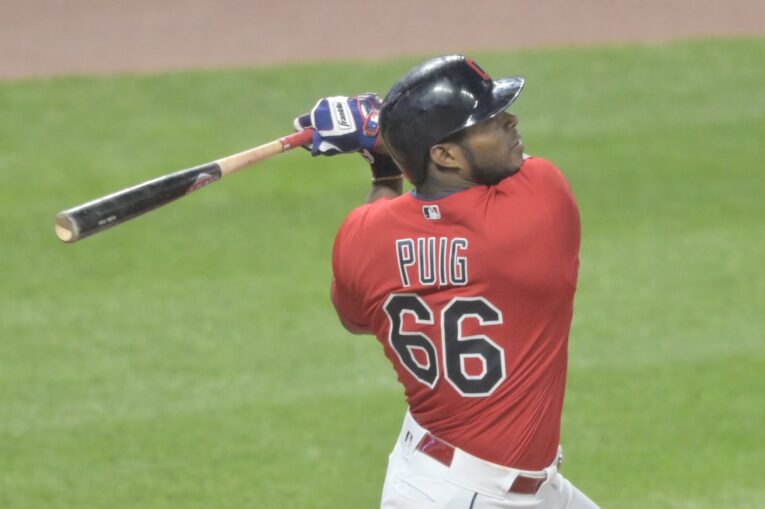
Even if there aren’t any known signs that Michael Conforto‘s oblique injury will keep him out of the lineup into the regular season, the prospect of the Mets beginning a crucial 2020 season without his bat should be addressed constructively.
The innocuous tweak-turned full-blown physical shutdown is a spring training phenomenon fans know all too well, from Jed Lowrie‘s knees last season (and technically, this season) to Anthony Swarzak‘s oblique in 2018, all the way down to Johan Santana‘s shoulder in 2013.
The Mets’ front office shouldn’t necessarily cave in to an elaborate lineup overhaul because of (arguably) unrelated injuries of yesteryear. But considering the depth chart adjustments would likely involve playing Jake Marisnick in center every day, while moving Brandon Nimmo and/or J.D. Davis further out of position, it’s safe to say the team can do better.
Even the alternative solution of moving Jeff McNeil into right and handing the hot corner to Eduardo Nunez makes an already wobbly defense considerably worse.
Enter Yasiel Puig.
One of three remaining outfielders on the major league free agent market (the other two being Melky Cabrera and Jacoby Ellsbury), the former Dodger sensation split his 149 games last year between the Reds and Indians, slashing a feasible .267/.327/.458 with a 100 OPS+ and 101 wRC+.
Just 29 years old, Puig has not been much of a target of the Mets’ this winter – at least such has not been reported. A Los Angeles Times article from Bill Shaikin reports that Puig had turned down a one-year, $10 million deal from an unnamed National League club.
MLB Trade Rumors had the right fielder pegged as their 37th-best free agent, projecting a one-year deal with $8 million. Surely, as the season draws nearer, he’d become more willing to take a short-term offer within that range.
The benefits of Puig holding down a fort in Conforto’s (possible) absence would be multifold. To get the obvious out of the way first, he would hit Marisnick under the table, even if he merely replicated his league-average figures from the prior season.
In 2019, Puig was in the 67th percentile in exit velocity and featured a similar batted ball profile (per Baseball Savant) to hitters such as Gleyber Torres and Joc Pederson. At a reasonable price no less, Puig would be an optimal short-term (and even possibly long-term) solution to whatever becomes of Conforto’s ailment.
Puig is no platoon bat, either, mind you. His .791 OPS against lefties last year was more or less identical to the .783 he managed off righties. Even in the event that Conforto’s time on the injured list is short-lived, Puig would serve as a worthwhile buffer not only against rushing Conforto, but also potentially overworking Nimmo and/or fellow Cuban Yoenis Cespedes.
In fact, Puig’s place on the roster could give the Mets a worthwhile reason to move Cespedes’ contract off their books altogether. His 611 plate appearances between Cincinnati and Cleveland came second to his career-high 640 in 2014 – a year in which he made the NL All-Star team and led the Dodgers with a 5.3 oWAR. Rather than praying Cespedes’ hamstrings and heels brave a 162-game season, the Mets could commit to a far more durable right-handed bat.
Puig’s defensive lapses don’t exactly bode well in an outfield that ranked 24th in UZR last season, though they also don’t grossly compromise matters any more so than either Davis or Dominic Smith. Neither outfielder boasts the footwork nor arm strength than Puig has across his career, though both could nonetheless become more expendable in a trade if Puig can find a niche in Queens.
Parting with either utilityman would be difficult for sentimental reasons, but the return may be able to serve other, more pressing needs during the season.
At this point, the question of why Puig remains unsigned warrants answers. The elephant in the room for any ardent baseball fan seems to be Puig’s temperamental nature. Just last year, the right fielder found himself tangled in two bench-clearing brawls with the Pirates – though, in fairness to Puig, both disputes were instigated by the Bucs’ pitching staff trying to hit Derek Dietrich as hard as they could with a baseball, and the fights were just as readily fought by Reds lefty Amir Garrett and team skipper David Bell.
Puig’s “involvement” in such scrums only really lends to a misguided (and often problematic, considering the racially veiled language that often accompanies these conversations) talking point that he is a difficult teammate. This narrative in particular has persisted since he first arrived in Los Angeles in 2013, emotional bat flips (won’t somebody think of the children?) and all.
Puig had a handful of unsavory moments in the Dodgers’ clubhouse prior to his demotion in 2016, though, like a lot of behind-the-scenes hit pieces, they emerged right as Puig’s productivity sat at an all-time low.
No player in either Cincinnati or Cleveland had a negative thing to say about Puig, even though neither team followed through in their goals of making the playoffs. In a similar vein, no Mets fan seemed passionate enough about Cespedes’ golfing escapades until the roster first began to crater following the 2016 season.
The vitriol toward those clubs of the 1980s would have been unprecedented had the team not managed 90-plus wins in four-straight seasons. Trashing your private planes and showing up to work hungover never means anything if the team is winning ballgames.
If Puig performs (which he has done consistently since 2017) and the rest of the lineup pulls its weight, no right-minded fan (much less any executive, scout, or coach) will even think about whether or not signing him was worth the trouble.
It’s a risk, and furthermore a risk with a price tag, but if Michael Conforto’s availability in 2020 is threatened early, the current alignment will certainly fail to keep the Mets above water early on. At the right price, it would be foolish not to take a chance.















